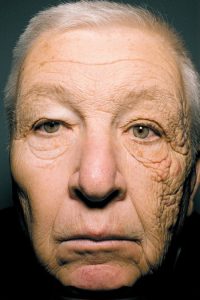It’s no secret that icy and snow-covered roads can have severe and often unpredictable impacts on traffic conditions. When these winter months roll in, heavy-duty drivers face dangerous and demanding routes, especially when they’re not prepared. Along with winterizing your truck, refreshing your wintery driving skills is crucial for surviving the frozen season.
When drivers are faced with a winter storm, icy roads, or other frosty conditions, it’s always better to play it safe. Things like taking your vehicle to a trusted mechanic for a thorough check-up or building an emergency kit can genuinely be a lifesaver. However, there are other ways to stay safe while driving your semi this winter.
In this article, we’ll go over our top 6 tips and tricks for driving a semi-truck safely in the winter.
1. Drive cautiously
When driving on ice- or snow-covered roads, it’s essential to take your time and drive cautiously. If you’re out of practice when it comes to driving in the winter, move slowly and pay attention to the capabilities of your vehicle. For instance, if your semi rides low, it won’t handle snow accumulation well, so it’s best to take it slow to prevent build-up. It’s vital to execute control and deliberate actions when navigating wintery road conditions. Sharp curves, rushed acceleration, and fast braking all result in decreased traction, leading to an accident. Stay alert and maintain a consistent speed while leaving enough distance between you and the vehicle in front of you. The safe amount of space will also help you when you need to use your brake.
2. Stock up on essentials
With inclement weather being so unpredictable, you must always have the essentials with you. This way, if you get stranded in the middle of these harsh climatic conditions, you will be prepared and safe.
Your emergency kit should include:
- Tire chains
- Spare fuel
- An extra fuel filter and wrench
- Coolant, washer fluid, and oil
- Vinegar
- A flare gun
- Flares
- A flashlight and extra batteries
- A CB radio (if one is not already in your cab)
- A first aid kit
- Blankets
- Hats, scarves, and gloves
- Snow boots
- Snow shovel
- Canned food and bottled water
We also recommend a few bags of cat litter. This unique emergency item can be used as a safe and eco-friendly way to regain traction if your tires get stuck on a patch of ice. Simply throw some litter under your tires, slowly engage your accelerator, and wait for your tires to do the rest.
3. Use your signals
This may seem like a no-brainer, but using your signals can be the difference between a safe ride and a preventable accident. The general rule of thumb is three blinks before changing lanes, but when the weather outside is frightful, stay safe and use five blinks before moving over. It would help if you also used your signals before turning. To give those driving behind you plenty of notice, be sure to activate your signal before you begin slowing down for your turn.
If the weather is too extreme for your comfort level, use your four-way hazard signals and move to the passing lane to allow those around you to pass. Hopefully, doing so will encourage other drivers to exercise caution and prevent a pileup from happening.
4. Let your truck warm up
When the temperatures drop below freezing, it can be hard on your semi’s heavy-duty diesel engine. So, it’s essential to allow your truck time to warm up before taking off on your route. This will prevent your engine from refusing to turn over and promote longevity past the winter months.
Pro Tip: While your rig warms up, turn on your defroster and let your windshield unfreeze itself. Two birds, one stone.
5. Be cognizant
As well as driving cautiously, you as a driver should be extra cognizant of those around you while driving through frosty weather. For example, water coming off another vehicle’s tires could indicate just how treacherous the roadways are. If there is a lot of water, the roads are wet, but the streets are freezing over if there is less spray. You should also pay close attention to the streets for black ice.
6. Check your tires, fuel, and lights
Perhaps the most crucial tip happens before you hit the road: check your tires, fuel, and lights. Regardless of the season, truck drivers should be inspecting their tires regularly. However, as the weather grows colder, your tires will need to be examined even more than usual. If your tires are underinflated, damaged, or worn out, it could lead to troubles on the road, such as low traction.
Checking your fuel is another crucial step to staying safe. By keeping your fuel tank filled, you will give extra weight to your rig, which will ultimately help your tires retain traction and stay on the road.
Once you stop for the day, be sure to check and clean your headlights, taillights, and license plate since they will more than likely be covered in a mixture of dirt and snow. For semi-trucks, your lights need to be as visible as possible, meaning your lights need to be clean and functioning correctly.
Want more information like this? Check out these articles:
→ Tips for Preparing Your Semi-Truck for Summer









